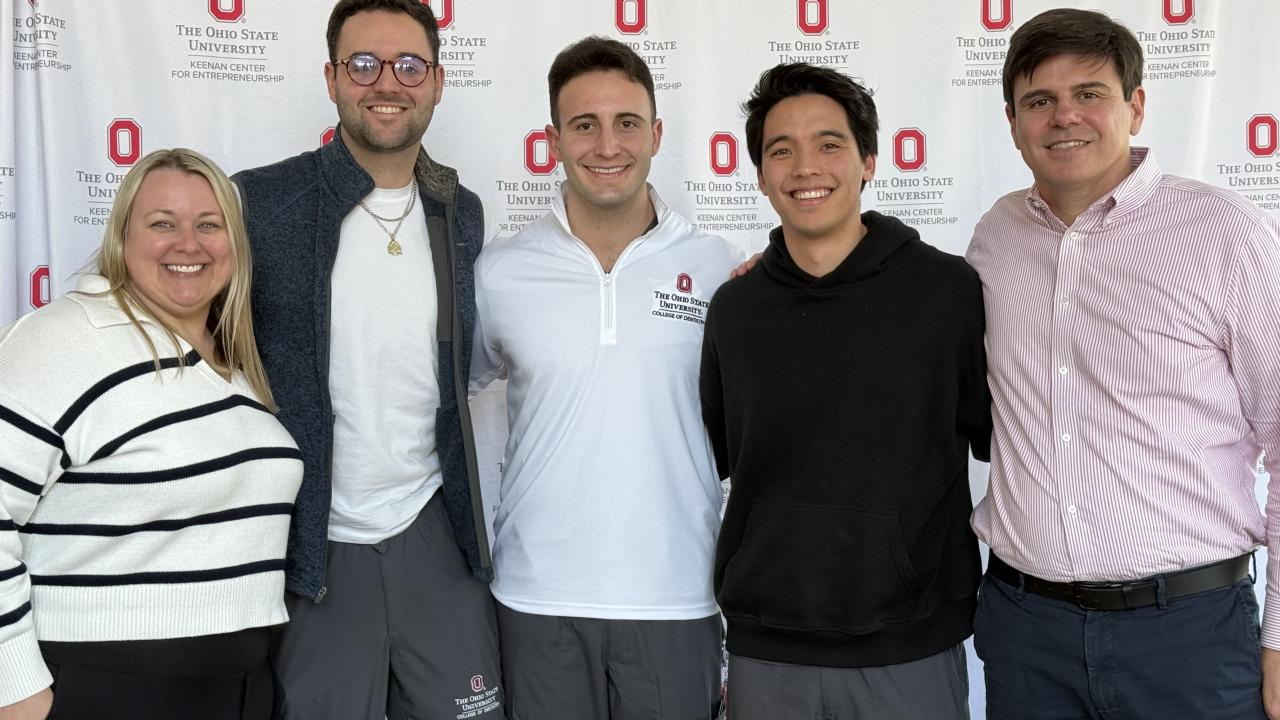Ohio State Students Aim to Perfect Dental Implants Through NSF I-Corps Program

A team from The Ohio State University is leading research on improving dental implants through the National Science Foundation (NSF) I-Corps program. Their work focuses on how implant angulation affects long-term success, a critical factor in advancing modern dental technology.
“The NSF I-Corps program has a broad scope, and it’s thrilling to see it extend into dentistry,” said Caroline Crisafulli, director of Entrepreneurial Education in the Keenan Center for Entrepreneurship. “This project shows how collaboration and creativity can lead to groundbreaking advancements in dental treatments.”
Ben Howard, Alex Zysik, Hudson Davis, Vincent Sabato, and Safa Alrashed, DDS, MS, from Ohio State’s College of Dentistry and Oral Biology PhD program first became interested in dental innovation through conversations with Luiz Meirelles, DDS, MS, PhD, an assistant professor, who introduced them to NSF I-Corps as part of his research into dental implant technology.
“We originally approached Dr. Meirelles because we were interested in innovation within dentistry,” Davis said. “He was working on exciting research, and we were lucky to join his team and become part of it.”
Their research focuses on dental implants, a permanent alternative to traditional dentures. Implants offer increased stability, helping patients chew and speak with more ease. Unlike removable dentures, which may lose their fit over time due to bone loss, implants are securely fixed in place and closely resemble natural teeth.
“There’s a lot going on with AI and digital technology in dentistry, but we were especially drawn to innovations in dental implants,” Davis explained. “Our focus is on how implant angulation impacts function and longevity.”
Implants can be used to replace a single tooth, multiple teeth, or even serve as anchors for full-arch restorations. However, the angle at which an implant is placed can impact its durability, appearance, and ability to integrate with surrounding bone. The team is studying these variables to optimize placement techniques and improve patient outcomes.
“Our research looks at how different angulations affect long-term success,” Davis said. “If we can refine placement strategies, we can help reduce complications and improve both function and aesthetics for patients.”
The students believe this research is especially relevant as demand for dental implants continues to grow. “Every dentist wants to place implants, and patients are asking for them because of their long-term benefits,” Howard said. “If we can make implants more predictable and accessible—maybe even lower costs in the process—more people can benefit.”
Beyond research, the program has given the students valuable insight into the entrepreneurial side of dentistry. Through customer discovery, they’ve gained insights on who is most likely to adopt new technologies and why.
“We had some great moments during I-Corps, especially when we realized which dentists are most open to adopting new innovations,” Howard said. “That market insight is just as important as the research itself.”
Next, the team will collaborate with faculty and residents to gather clinical data, testing how different angulations affect outcomes. They also hope to continue in the national I-Corps program to refine their findings and explore market potential.